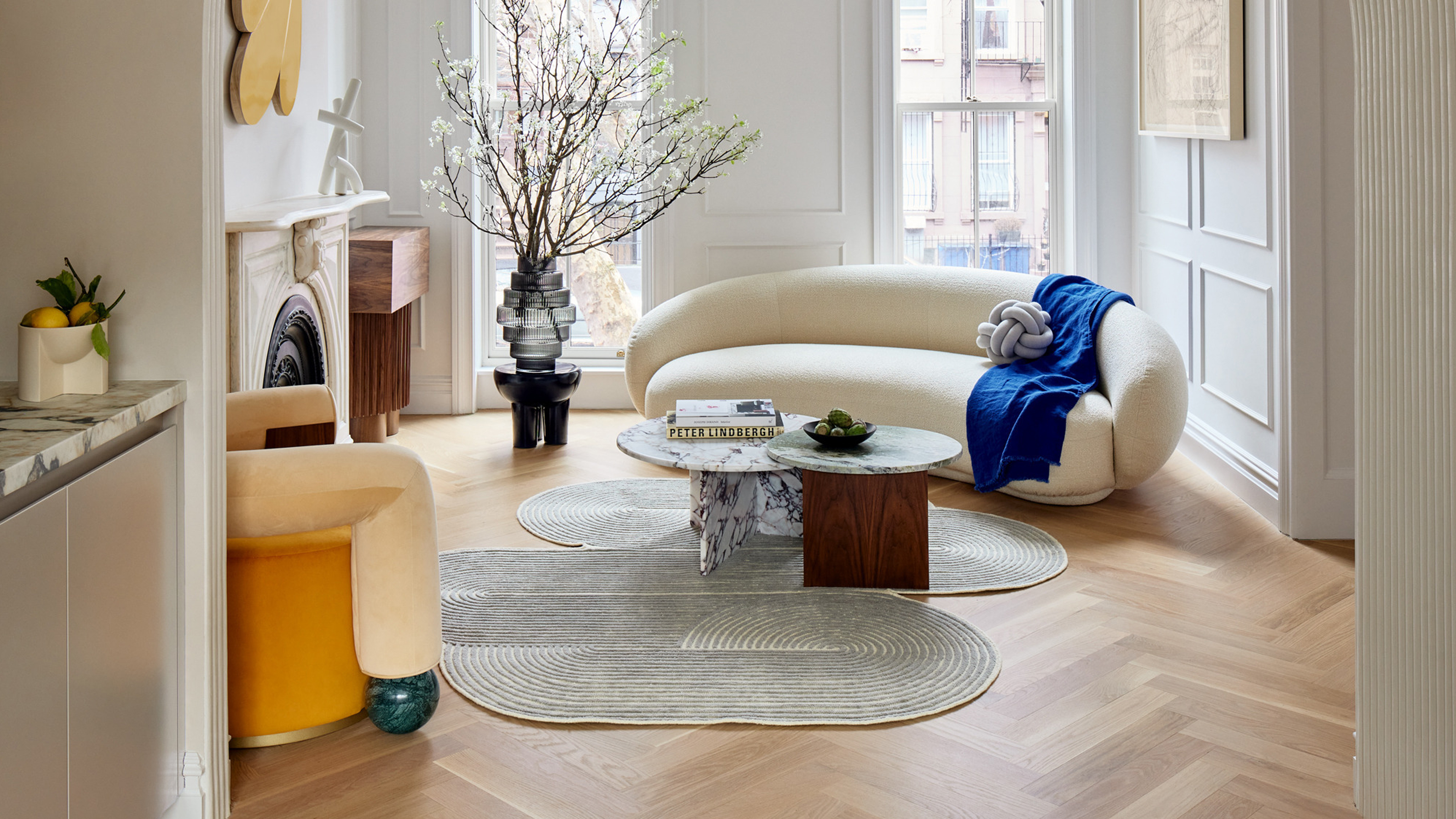
Rugs are more than just something to cover your flooring with — they're an art form in their own right, and an opportunity (that's sometimes squandered) to do something creative that adds the magic to an interior scheme. Yes, some people like to keep it simple with their rug choice — and power to you, if that's you — but there's a whole world out there of brilliant and inspired ideas to make floors sing.
That's where rug trends come in. Rugs tend to be bigger investment pieces for your home, especially when you're looking at larger sizes, so straddling that essence of timelessness and freshness is key in finding something you're happy to shell out for, and that won't fall out of fashion any time soon.
"The rug is a giant canvas that can really make an impact, that doesn't give you an issue with comfort, or necessarily extra cost," architect Alexandra Barker, founder of Barker Architecture Office, tells me when I ask her about her fondness for creative rug choices.
I'm an interiors writer by profession, so I spend pretty much all day, every day looking at beautiful homes and new launches. With that in mind, these are the interior design trends I'm seeing designers obsess over most right now, and why I think they've got the potential to become new design classics.
1. Irregular Shapes
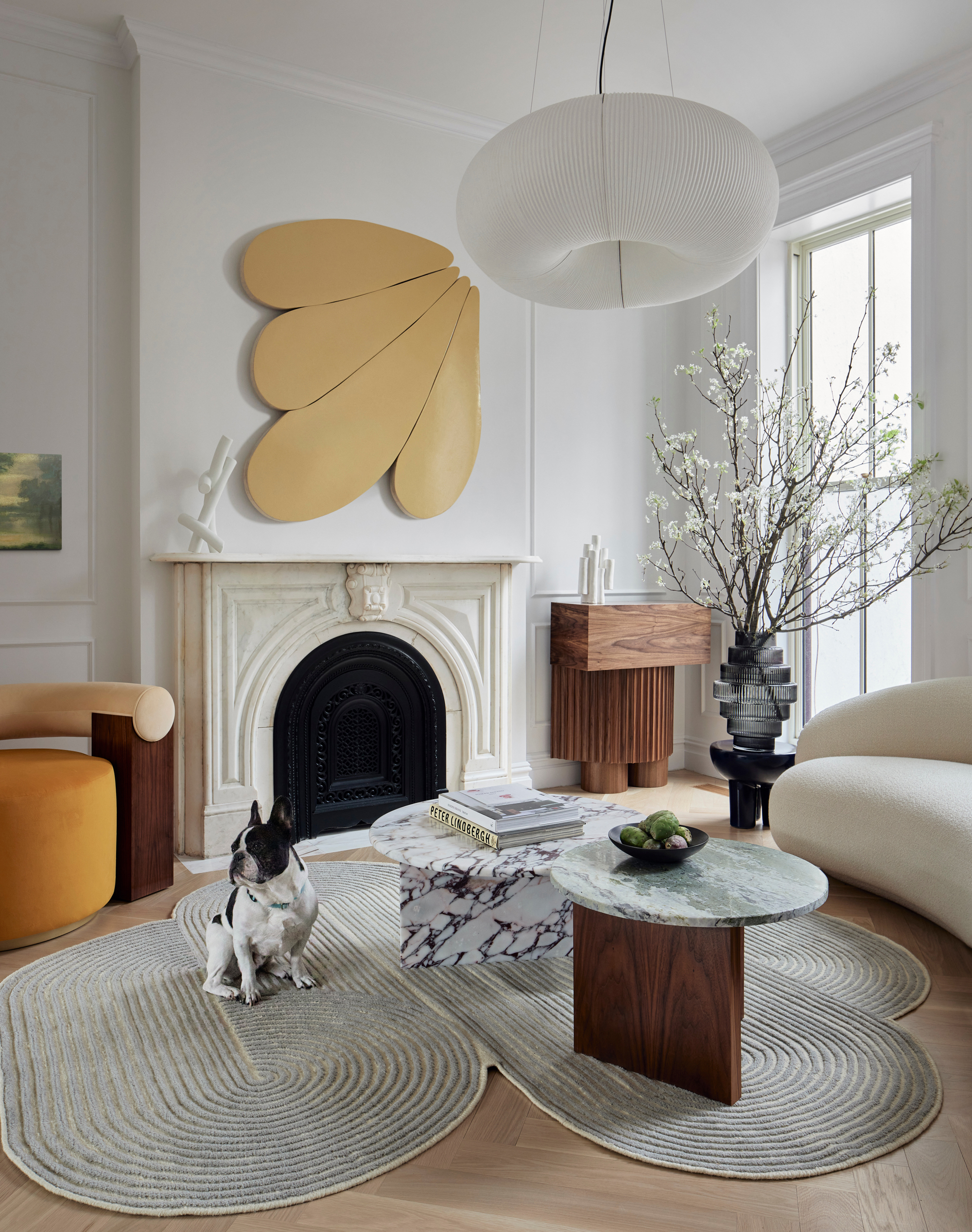
Can't decide between a round or rectangular rug? How about neither, and embracing the irregular rug trend? "Irregular shapes are a refreshing way to think about floor covering, bringing it to the foreground, rather than making it a background character," Alexandra Barker tells me.
It's a style that is a little more novel, too, not only in the artistic quality it brings to a space, but how it interacts with your furniture or the flow of a room. "It can really change how you walk through, and even zone, a space. There's something interesting about this style of rug defining where you're sitting, versus where you're walking," the designer adds. "Irregular shapes help to make that relationship more prominent, while also playing with ideas like negative space in interior design in a different way than just filling your space with a large rectangle would."
The design used for this Brooklyn Brownstone's living room rug is from a Mumbai-based brand called Hatsu, which the designer connected with, but Alexandra also recommends brand Okej for interesting shapes, such as this Green Squiggle rug you can buy from Ssense.
2. Palette Builders
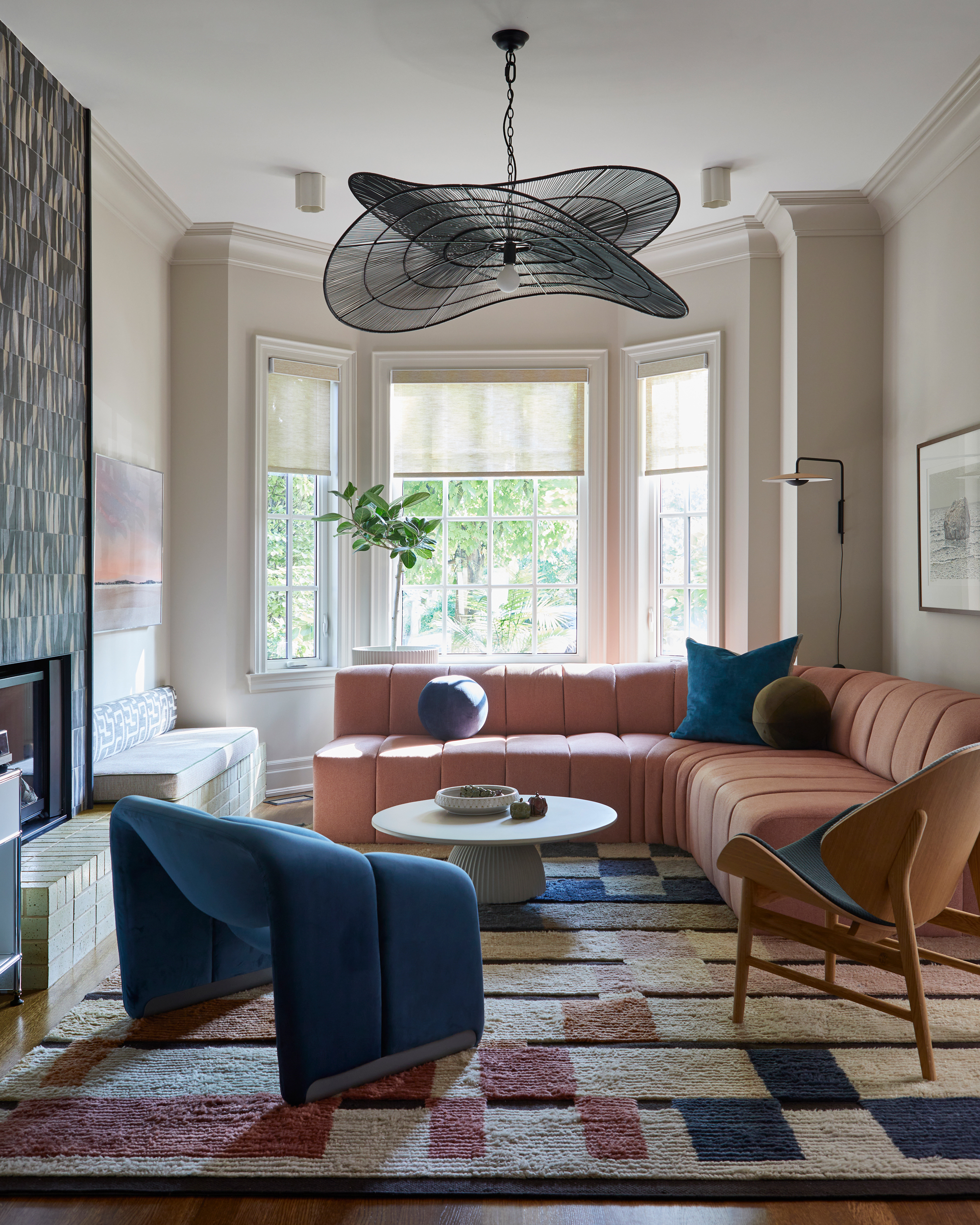
Yes, there are certain hues that we're seeing come through in rugs right now — anything, in general, that's a color trend anywhere in the house — but we're also seeing more designs that introduce what I like to call an instant 'palette builder'. A rug, like in the living room above designed by Katelyn Rempel at Studio Sonny and Lisa Lev at Lisa Lev Design, pulls the scheme together by perfectly outlining not only the color palette but the balance of the colors, too.
Think of it like this — if you're less confident in using color, a rug can represent a microcosm of your scheme, already created for you by someone who understands how to use color in a design. If you're drawn to a rug design because of its colors, you've got a readymade palette to pull out using ideas such as the 60-30-10 rule.
In this room, part of a beautiful Toronto home, the rug works to make the different elements feel cohesive. "There is an abundance of color and pattern in other elements, so the rug in this project is used for grounding and defining space," Lisa Lev tells me. "[The rugs we chose] are modern but also interesting and integrated into the overall spaces they are in."
3. Grooves

You might not think of pattern as a way to introduce a sense of calmness into a decorating scheme, but the repeating lines of the 'grooved' rug trend we're seeing everywhere right now is a good example of how pattern can play a softer role in the home. Sometimes raw and organic, in imperfect concentric circles like the rings of a tree or a pebble dropped in water, sometimes more graphic and modern, it's a design that still brings to mind the patterns of nature.
"Grooved rugs also bring a sense of movement to the room, without overloading it with pattern," Alexandra Barker, founder of Barker Architecture Office, tells me. "I use them quite a lot, and they really engage the eye, and take it on a journey."
The rug, pictured above, is again from Mumbai-based Hatsu, but you can find a similar idea in something like Muuto's Relevo rug, which you can buy from Chaplin's.
4. Thick and Thin
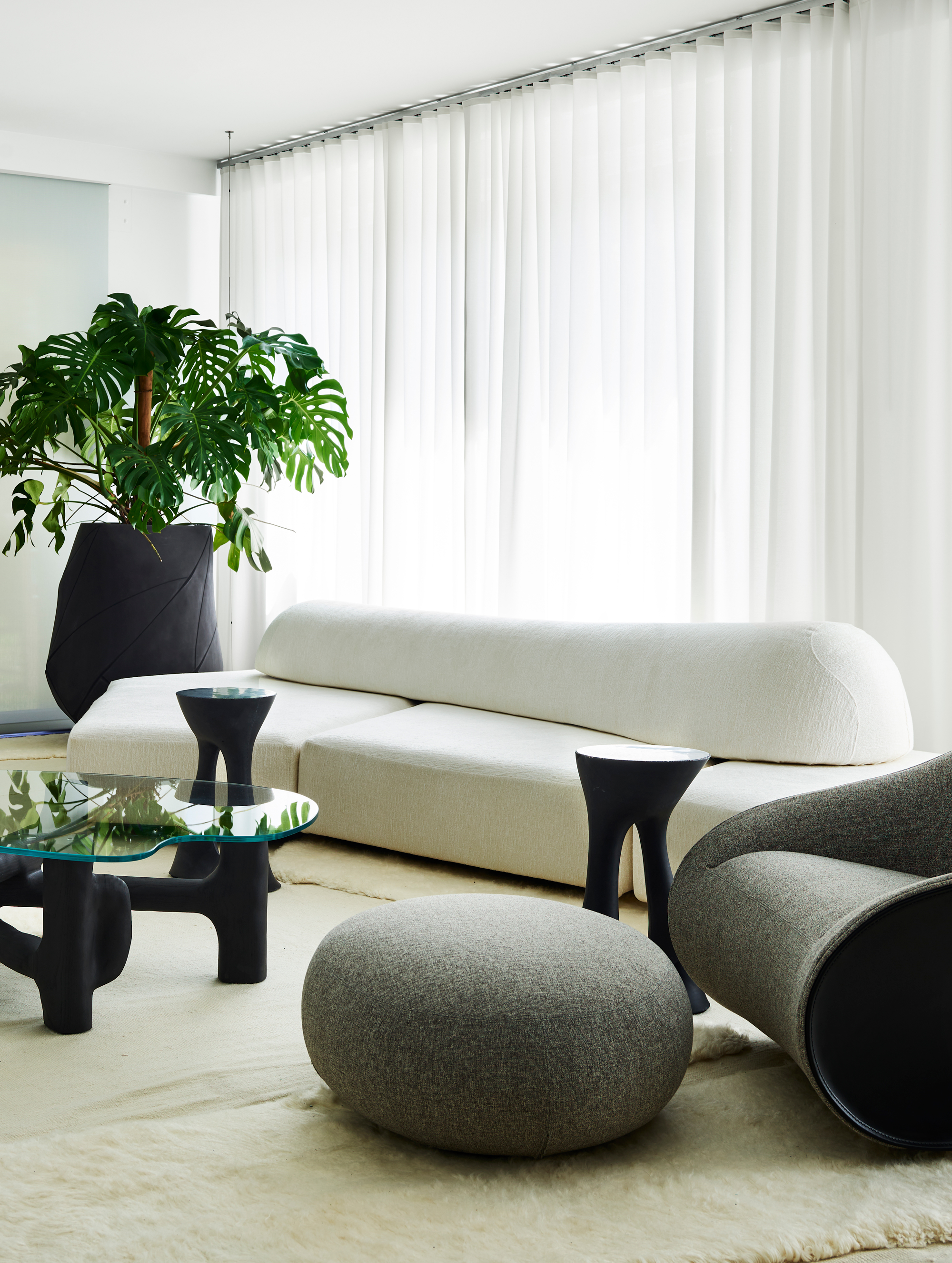
Look at any modern, luxury rug brand, and you'll see a distinctive 3D-style of design coming through combining a shaggy high pile in some areas with a low- or flatweave pile in others, carving out abstract and intricate patterns.
This style of rug is often seen in neutral, white or cream, bases, and works particularly well over large formats, as in this living room designed by Sashya Thind. "While creating a minimal space, the goal is to create depth in texture, which this achieves without being the focal point of the room," the interior designer explains. Where a plain rug with a single texture would feel expansive over the size of this space, the carved surface helps bring some sense of shape to the room beyond the furniture layout.
They're not the easiest of rugs to search for online — I find that the terminology used isn't consistent across retailers. However, for The Rug Company's Ivory Folk design (which is a beautiful take on the idea), the brand refers to the technique as 'carving', which yields the closest results in search engines — or you could just take this article with you to ask in your rug retailer of choice to see what they have that's similar.
5. Quiet Pattern
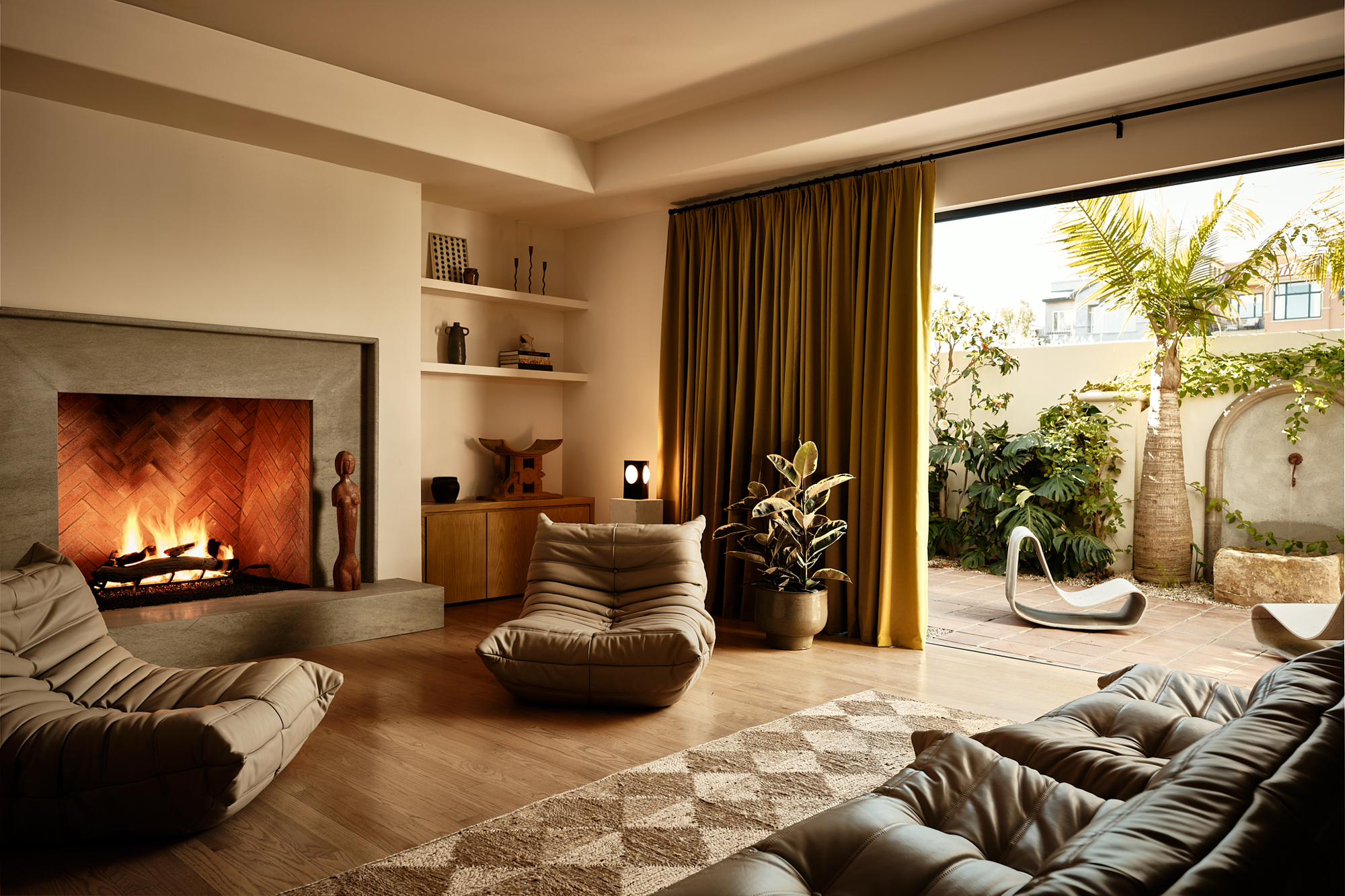
Not plain, not quite patterned, there's a growing rug trend for using texture to replicate prints, while playing into the more earthy, natural styling that still prevails in interior design right now. "Textiles, in general, are still trending toward earth-tones with the addition of bold texture, and rugs made with natural materials like sisal, wool, and jute,' interior designer Reena Sotropa, founder of Reena Sotropa In House Design Group, says. "Tightly woven low pile rugs provide an ideal foundation for the layering but the tone on tone patterns that are created via texture or differing pile heights can also provide that clean simple base, but with a bit of added detail."
Take, for example, a seemingly modern design classic pictured above — the jute checkerboard rug. This style is made so that the jute fibers face in different ways, creating a textural pattern that can read a little differently depending on where you're looking at it from. Sometimes the checkerboard is a little more defined than others, but it offers a softer way to introduce pattern into your room. If you want to get this look, a little tip for you — they currently have a similar style of diamond jute rug on John Lewis, and it's a steal.
FAQs
What Rugs Aren't in Style?
It's all about texture, so those plain, middle-of-the-road (in terms of pile length) rugs can feel a little dated in modern interiors. Either embrace something shaggy and deep, or something a little more of a flatweave.
Another rug trend that's fallen out of favor is large-scale abstract patterns, when they're just stuck on a rectangular rug. This trend has evolved into using rug shapes that echo the lines of the pattern, like in the rug pictured below, rather than confining it to a linear rug form.
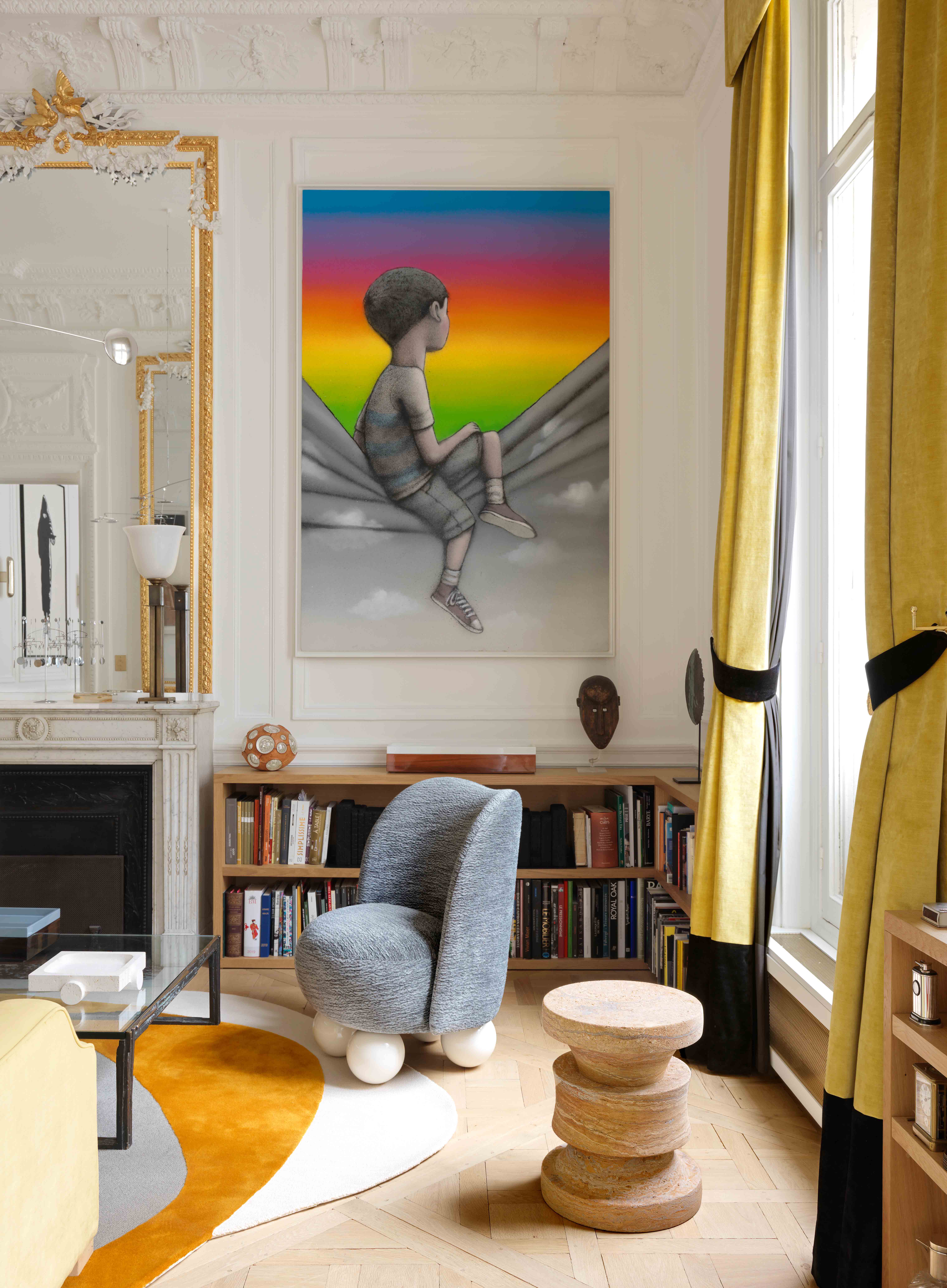
Of course, these aren't the only cool rugs out there right now, but it gives you a sense of context of what is working in design right now, and what's not.
If you want comfort under foot, a rug is pretty much a must — but don't forget, carpet trends are re-emerging as the bold new way to decorate, so don't feel limited to only choosing hard floor finishes.







